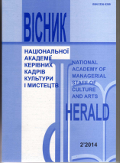ATTRIBUTION AND EVALUATION OF THE PORCELAIN ANNIVERSARY PLATE PRODUCED IN SWEDEN
DOI:
https://doi.org/10.32461/2226-3209.2.2014.137968Keywords:
, manufactory, plate of highly glazed pottery, attribution, stamp, collectibles, appraisal, sales comparison approach, estimateAbstract
The porcelain plate that is the subject of this article, was bought by one of the authors in July2011 inan antique shop in the central part ofStockholmnear The Royal Palace. The asking price for the plate was 300 SEK. The plate was made by the Royal Swedish porcelain manufacturer Rörstrand in 1953 and dedicated to the 700th anniversary ofStockholm.
A first examination of the plate revealed that it is in good condition. There is an image ofStockholmon the front of the plate and three crowns on its reverse side – the royal symbol ofSweden. There is no serious damage to the plate except a slight smudginess of the reverse side. The front side shows a historic image of the central part ofStockholmwith The City Hall and The Royal Palace. On its reverse side there is a delicate, manually placed signature. The attribution and monetary valuation of this plate can be a subject of interest because it rarely can be found in the pages of Ukrainian scientific publications.
The visual and comparative study of the plate allows the following conclusions:
1. The stamp on the reverse side of the plate indicates that it was produced by the oldest Swedish Porcelain Manufacturer – Rörstrand, which has existed since 1726. Rörstrand was founded inStockholmand produced tableware and faience of the finest quality. During the twentieth century the production was moved to Gothenburg in 1926, and 10 years later to Linköping. In 1976 themuseumofRörstrandwas inaugurated. For almost 300 years Rörstrand has been synonymous with quality and fine craftsmanship.
2. The presence of the stamp indicates that the plate was produced in a limited edition for the 700th anniversary ofStockholm.
3. The stamp consists of the letter "R" surrounded by three blue crowns. The drawing is typical for the tradition
that exists since 1953.
4. The plate is in good condition. It has no traces of previous restorations. There are small dents in the places
where there is no drawing.
5. The monogram on the stamp indicates that it was decorated by Oscar Dahl. He worked at Rörstrand in the1950s, which are regarded as its very best decade, when the company achieved worldwide recognition. Oskar Dahl is mainly famous for his design- and decorating-work at Lidköpings porcelain and at Rörstrand from1943-1966.
He mostly decorated urns, vases and platters with landscapes and urban motifs. He designed, among other things, a dinnerware for the shipping company "the Swedish American Line", and for "Women inSweden", an organisation that was founded in 1928. Oscar Dahl items are signed "Oscar Dahl", "O. Dahl", or "OD".
The estimation of the cost of the decorative plate was made according to the International Valuation Standards, and is based on a comparative approach. The analogue list and its characteristics, which are given in this article, were obtained from the Internet. Two of the selected analogues were from the same manufacturer "Rörstrand" and sold on Bukowskis market inSweden. Another one came from a famous Russian manufacturer in Kuznetsk. All analogues differ from each other in size, time of manufacture, the preservation, the place where it was sold and authorship. To reduce these differences we adjusted some of the characteristics according to the comparative approach. As the result of the research we found that the estimated value of the porcelain plate produced by the Swedish manufacturer "Rörstrand" could be 300.00 USD, which is typical for the Ukrainian market of antiquities.
General conclusion: the attributes of the plate show that it is an authentic item released in limited edition. This plate has historical, cultural and collectors value and may be included in the museums collection.
Downloads
Published
Issue
Section
License
Authors who publish with this journal agree to the following terms:
1. Authors retain copyright and grant the journal right of first publication with the work simultaneously licensed under a Creative Commons Attribution License that allows others to share the work with an acknowledgement of the work's authorship and initial publication in this journal.
2. Authors are able to enter into separate, additional contractual arrangements for the non-exclusive distribution of the journal's published version of the work (e.g., post it to an institutional repository or publish it in a book), with an acknowledgement of its initial publication in this journal.
3. Authors are permitted and encouraged to post their work online (e.g., in institutional repositories or on their website) prior to and during the submission process, as it can lead to productive exchanges, as well as earlier and greater citation of published work (See The Effect of Open Access).


